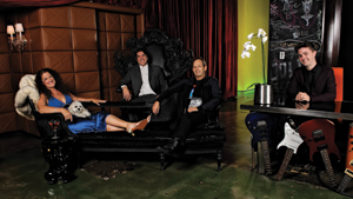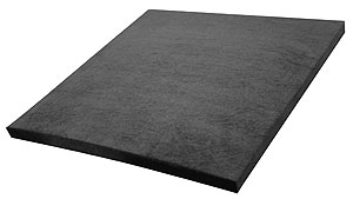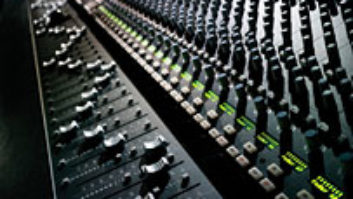When considering which classic rock albums would seem to be natural choices to make the move to a 5.1 surround format, the Beach Boys’ Pet Sounds — a true sonic marvel when it came out in 1966 — would have to be high on any list. Considered by many to be Brian Wilson’s great masterpiece, Pet Sounds combined some of the richness and depth of Phil Spector’s most ambitious productions with radical arrangement ideas that influenced The Beatles and many other late-’60s trailblazers. It’s one of the most influential albums of that decade, so who wouldn’t be curious to hear Brian’s magnificent achievement spread out over six speakers? There’s just one problem, which many people forget: Pet Sounds was a mono album!
Have no fear, though, because Mark Linett is here. Over the past 15 years, Linett has established himself as the de facto curator of the Beach Boys’ sonic legacy. The Grammy-winning engineer/producer has worked with an impressive array of artists during his long career, including Randy Newman, Rickie Lee Jones, Eric Clapton and Jane’s Addiction; and he most recently produced and engineered live CDs for Dave Alvin and a reunion of his old band, The Blasters. But Linett always seems to come back to the Beach Boys. He’s shepherded the CD releases of their greatest albums, as well as various compilations. At this point, he knows more about the Beach Boys’ master tapes than anyone else on the planet, and he’s lavished the group’s catalog with a care and attention worthy of such distinguished work. Another go-around for Pet Sounds? No problem. Though it was no cakewalk, either.
“I do have a bit of history with Pet Sounds,” Linett says with a chuckle from his Glendale, Calif., studio, Your Place or Mine. “To go back to the beginning, I supervised the first CD release in 1990 — talk about the ancient age of digital! That was the beginning of [Sonic Solutions] NoNoise, and I remember going up to San Francisco and sitting there at Sonic’s offices and having them modify 15 seconds of a track, and then I’d listen to it on headphones and say, ‘Too much!’ and we’d go through a couple of tracks that way, adjusting things. Then I’d go back to my hotel room, and overnight they would process maybe three songs. It was really time-consuming. And then five years later, we scrapped that anyway. Then, later [in 1997], there was the Pet Sounds Sessions box set, and that included the first stereo version. That was the first time I went into the multis — to do the stereo version.
“Actually, I had listened to some of the multitracks as early as ’88, while we were working on Brian’s solo record [Brian Wilson] for Sire. They sent over 8-track masters, which was about half of the album, and I remember renting a machine and a head stack, and we just sat there and played it, marveling at it — ‘Listen to just the vocals on “Wouldn’t It Be Nice”! Here’s just the track!’ It was a total thrill to hear; still is in fact.
“For the stereo mix, I had to create discrete multitracks to work from, because the standard practice of the day in ’66 was when you had a track, you just bounced it from machine to machine and off you went. On Pet Sounds, the basic tracks were done on 3- or 4-track, and if it was a live session, no more than three tracks were ever used, because even though they had 4-track machines at Western [Studios], the fourth track was usually just a mono reference mix for playback. Then Brian would mix that to mono and use another 4-track to overdub; or, in the case of about half of the songs, he took it over to CBS Recording Studios, where the only 8-track in town was at that point, and dubbed the track down to mono on one track of the 8-track, and then he’d use as many as seven tracks for vocals, although they almost never did use seven tracks. I think on ‘God Only Knows,’ they’re actually using seven tracks, though not all of them got used on the finished record.”
Linett says that although a number of Beach Boys multitracks are missing from the group’s extensive tape archives, “in the case of Pet Sounds, more than 99 percent is there. The tracking date for ‘Don’t Talk’ is missing, although we do have the dubdown, with the overdub strings and the two lead vocals, so that was okay. The only thing of any significance that we’re missing is the double lead vocal for ‘You Still Believe in Me.’ Now, typically, the way they worked back then, like on a song such as ‘Caroline No,’ you’ve got a 3-track — the basic tracking date — and then Brian put a lead vocal on track 4, and then as Chuck Britz mixed that down to mono, Brian sang live and doubled it. So the mix reel was done that way: You had three tracks of playing plus vocal and now you have a mono master with a doubled vocal. That would have been a problem for us [on “Caroline No”], because we wouldn’t have had the discrete doubled vocal, except for some reason — and I assume it was just a patching mistake — right before the final master, there was a take where the only thing that got on the mono machine was Brian’s two lead vocals, so I was able to use that plus the 4-track master to create a discrete master we could mix from.
“You have to remember that, in those days, nobody believed the multitrack tapes served any purpose other than to get you to the finished master. And that thinking permeated all the way to the record companies that, if they saved this stuff, it was almost pure luck. They usually threw away all of the outtakes from a session, at the very least.”
When Linett worked on the stereo release of Pet Sounds back in 1996, his first step was to transfer and synchronize the multitrack elements using a pair of Sony DASH multitracks. For the 5.1 release, he switched to a DAW system that allowed him to work at 24 bit, 96kHz: an enhanced Apogee Native Tools system, which combines Apogee’s AD-16 and DA-16 converters with Steinberg’s Nuendo software and 96/52 PCI-based digital I/O card. “The 24/96 really does make a difference,” Linett says. “If consumers only hear one format — 16/44 — they probably think it sounds good, and it does, but if you compare it to 24/96, you can really tell that [the higher bit and sampling rate] makes a huge difference. It’s almost like taking a whole layer of dirt off of a picture. It’s never sounded better, and we’ve also remastered the mono and stereo mixes at 24/96 for the DVD-A [which will be released in January].”
For Linett, the first challenge was getting the material from the different multitrack sessions — usually the 3-track basic plus a 4- or 8-track overdub reel — in sync for the transfer to Native Tools, a task that required him to make minute adjustments on the varispeed of one of the two playback machines “until you can find the point where the two tracks will stay synchronous for at least 15 or 20 seconds if you line them up. You’re trying to find a speed that is accurate enough for that period of time. Then I’d do the transfer. After the vocal transfer was done, the mono track mix was used as a reference to get the vocals in perfect sync with the original 3-track instrumental master. The vocals would be shifted several times during each song to keep them in alignment with the backing track, using the mono track mix as a guide. But that mono instrumental track wasn’t used in the final mix.”
Once everything was in Native Tools, “I mixed from Nuendo but mixed analog through my API 2488, and in some cases, also fed through tube outboard modules that are the same as the ones they used in the console at United Western,” Linett says. “As on the stereo mix, I tended to feed the basic tracks, and in some cases, vocals back through the console just because the sonic footprint it would impart. The main plug-ins we used were the Universal Audio UAD-1 emulations of the LA-2A and the 1176 and the Pultec. And I used the [Forssell Technologies] CS-1 input channel strip quite a lot — it’s got an EQ and a compressor and delays, which we didn’t use. The nice thing about the UAD-1 is it doesn’t soak up any DSP from the program.
“The other thing that made a big difference in this project,” he continues, “is my Lucid external clock generator [the SSG-92]. I’m a total convert to using the best external clock source you can get, because we did some tests that prove that, especially when you’re dealing with coincident material, it makes an enormous difference in the depth of the soundfield.
“We transferred everything at 24/96 and mixed back to Nuendo and also to analog [Studer] at 15 [ips] SR, which is where 90 percent of what we used came from. We used six tracks of a 2-inch 16-track.”
Taking advantage of the extensive sonic real estate that 5.1 affords was more difficult than it would be on 16- or 24-track projects, because most of the individual tracks featured ganged instruments or vocals, rather than discrete parts. “A typical split-out for the 3-track [basic] would be horns on one track, maybe one of the basses and some of the percussion on another, and then everything else on the third track,” Linett explains. “For vocals, before the advent of the 8-track, the requirement was pretty much to do the lead and the backgrounds all together. But by the time of Pet Sounds, there are more multiple parts being done rather than an entire ensemble. On the 8-track, you might find you’ll have the whole group singing a background part, but then you might have some extra discrete vocals or answer lines or third parts. But the main thing is the leads have now been removed from that for the most part. There were a couple of exceptions, including ‘Sloop John B,’ which is the oldest track, recorded in ’65. That was done first on a 3-track, then bounced to 4-track, then bounced to another 4-track. The main lead and main backgrounds are on one pair of tracks, having been sung like that. Then there’s another set of background vocals that were added on the final 4-track — the very, very high parts — and on that there’s also actually a 12-string picking guitar part that was also added at the end.
“The way we make records today, the instruments are usually isolated because they’re going on separate tracks and everyone’s wearing headphones. What I started to realize when I listened to the full sessions from ’66 — it was cut mostly at Western 3, with two songs cut at Gold Star and one at Sunset Sound — is the musicians were in the room playing together and nobody was wearing headphones. You had all of these musicians playing in the room, and in the control room, you’ve got Brian and Chuck Britz [at Western] or Larry Levine [at Gold Star] combining all of this and adding reverb and adding tape slap and making the sound we all know, live. And nobody playing it heard that unless they walked into the control room and heard a playback. I realized when I was listening to the tracking date for ‘Wouldn’t It Be Nice’ that the only person who’s wearing headphones is drummer Hal Blaine, because the 12-string guitar lick [that opens the song] was played directly into the board. So Hal had to hear it so he knew when to bring the band in. But no one else who wasn’t in the control room could hear the 12-string.
“Leakage was everything. Not only did you work with it, it was a huge part of the sound. And that’s why those smaller rooms were so popular for rock. You hear these huge records that Brian and Phil Spector made and you think it must be an enormous space. Well, no, it’s a very small space, because that allowed the coincident information to be useful. If you were in a huge room like Studio 1 at Western, the bounceback from instruments to the other mics would have been objectionable, whereas in a small room, it added another dimension to the sound.
“What’s ironic about all of this is that in the ’60s, when Brian was doing these records, he greatly preferred mono, to stereo even, because, philosophically, the idea that you work that hard on something and present it in mono there’s no question of how it’s supposed to sound. There isn’t much a listener can do to alter what you’ve created. In stereo, there are all these other variables: How far apart are the speakers? Are they in phase? In addition, the main outlet for this music in 1966 was still mono AM radio, and that’s what Brian mixed for.
“So, in a way, it’s strange that we did a stereo version of Pet Sounds and now we’re doing 5.1. You’ve got so much latitude in what the playback environment is going to do to your mix that it’s really tricky. There are an awful lot of variables, because now you’re dealing in a more three-dimensional space. How do you place these same elements in that space and still keep the same vibe, but not have it sound like things are missing? The object was to make it feel like the original record but in this new format.”
Not surprisingly, Linett opted to keep most of the vocals spread across the front of the surround mix, “and we have instruments and backgrounds that are predominantly in the rear, and also a lot of stuff to the sides between the front and the back, to try to make it a real surround experience. Of course, if I’d had everything on separate tracks, it would have been a completely different kind of mix. We would have probably pushed things much further into the corners so things were really popping out.”
Asked about which song was best suited to the surround experience, Linett says, “Probably ‘I Just Wasn’t Made for These Times,’ because in the B sections and in the chorus, there are all these vocal parts that come in, and they work really well when you can separate them out and move them — it increases the depth of awareness of what Brian was really doing. You’ve got a double lead vocal and in the chorus, there’s a background part sung in Spanish that I never even realized was there until we worked on the stereo album. On the DVD-A, when the chorus comes in, the Spanish vocals are actually behind you and then the first part of the round comes in on the left, the second part comes in on the right and then there’s a third part that’s playing in the center.
“‘Sloop John B’ also worked really well because of those extra little tracks Brian put on. It’s amazing.”
What are Linett’s feelings about the proper use of the center channel? “My center channel philosophy is ‘No center channel,’” he says with a laugh. “I don’t like to use it. I went back and forth over whether to put nothing in it or put a tiny bit in it. I ended up putting a teeny-tiny amount in it, just so people won’t think their system is broken. We’ve done fine with a phantom center all these years.”
The mastering was done by Joe Gastwirt and Steve Hall at Futuredisc. “I can’t thank them enough,” Linett says. “They worked really hard to get this new version of the album onto the disc, and 5.1 mastering is a lot harder than stereo mastering, believe me.”
Linett has done a magnificent job of maintaining the integrity of the original recording while adding the depth and dimension we’ve come to expect from surround mixes. There’s nothing gimmicky about the way voices and instrumental groupings have been placed in the surround field; rather, it all sounds like a natural extension of the mono mix — a heightened reality, if you will. Particularly effective are “God Only Knows,” “I Know There’s an Answer,” “Pet Sounds” and “I Just Wasn’t Made for These Times”; but it all sounds amazingly fresh. A bonus for hardcore fans is the inclusion of a number of extra tracks — session excerpts of “God Only Knows” and “Wouldn’t It Be Nice” (where we get to hear Brian instructing Hal Blaine how to enter the song after the 12-string intro); a beautiful, vocals-only mix of “I Just Wasn’t Made For These Times”; the instrumental “Summer Means New Love,” originally released in mono on Pet Sounds‘ predecessor, Summer Days (And Summer Nights) and more.
With the completion of the Pet Sounds DVD-A, Linett has gone as far with those masters as he’s likely to go for a while, but that does not conclude his involvement with the music from that album: This past year, he engineered a live album of Brian Wilson and his 10-piece band re-creating the album onstage, and it’s likely that a DVD-Video of that concert — in 5.1 surround, of course — will be on his plate in 2003.
And beyond that? “Well, I’d love to see what I could do with Wild Honey and Smiley Smile,” he says. “Those would be a really interesting records to mix in 5.1. If only we could find the multitrack for ‘Good Vibrations.’ If anyone knows where that one is, I’d love to hear from you!”
Linett and Your Place or Mine Recording can be reached at[email protected].




